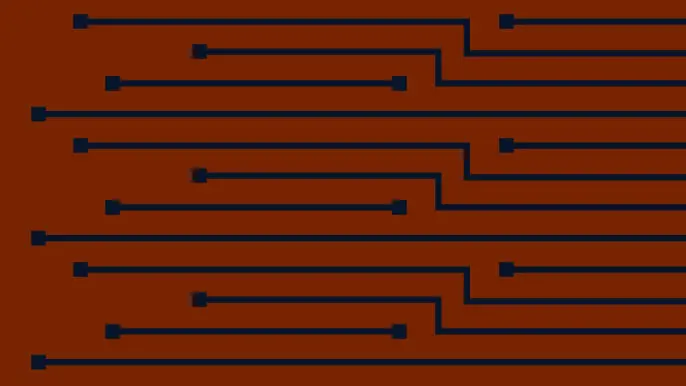
NetSPI’s View on the 2023 Gartner® Competitive Landscape: External Attack Surface Management Report
Table of Contents
- What is External Attack Surface Management?
- Beyond Asset Discovery: How External Attack Surface Management
Prioritizes Vulnerability Remediation - The Role of EASM in Continuous Threat Exposure Management (CTEM)
- How External Asset Surface Management Relates to Penetration Testing
- Manage Your Growing Attack Surface with NetSPI ASM
External Attack Surface Management (EASM) accelerated to the frontline of proactive security — and for good reason. The technology creates a comprehensive view of a company’s external assets by mapping the internet-facing attack surface to provide better insight into changes and where to focus the attention of security teams. Gartner wrote a report that explains EASM in-depth, including why asset discovery is the tip of the EASM iceberg, and how EASM support Continuous Threat Exposure Management.1
What is External Attack Surface Management?
External Attack Surface Management provides an outside-in view across a company’s attack surface to reveal assets and potential exposures. Focusing on external attack surfaces brings the greatest security value to organizations because of the sprawling growth of external attack surfaces. In fact, 67% of organizations have seen their attack surfaces expand in the last two years.2
EASM is useful in identifying unknown assets and providing information about the organization’s systems, cloud services and applications that are available and visible in the public domain and therefore could be exploited by an adversary.
According to Gartner, “Common EASM capabilities include:
- Performing external asset discovery of a variety of environments (on-premises and cloud).
- Continuously discovering public-facing assets as soon as they surface on the internet and attribute those assets to the organization (commonly using proprietary algorithms) for a real-time inventory of assets. Examples of public-facing assets are IP, domains, certificates and services.
- Evaluating if the assets discovered are risky and/or behaving anomalously to prioritize mitigation/remediation actions.”
Beyond Asset Discovery: How External Attack Surface Management Prioritizes Vulnerability Remediation
Given the inevitable sprawl of attack surfaces, many companies are embracing External Attack Surface Management solutions to discover their full scope of assets and prioritize critical remediations.
Asset discovery is an important capability to have, and one that’s helping to drive the adoption of external attack surface management. That said, asset discovery is only one aspect of effective EASM.
Why Asset iscovery Isn’t Enough
While asset discovery is an important and complex step, by itself, it’s not a comprehensive measure to advance security posture.
According to the Gartner report:
“In order to be more actionable, EASM needs to support data integration and deduplication of findings across systems, automation of assigning the asset/issues to the owner of the remediation process and tighter integration with third party systems. These include ticketing systems, security information and event management (SIEM), security orchestration, automation and response (SOAR), configuration management database (CMDB), and vulnerability assessment tools. Some EASM provides remediation steps and guidance on prioritized issues, a dashboard to track the remediation progress, or the creation of playbooks.”
For attack surface management to effectively improve an organization’s offensive security program, it must incorporate vulnerability prioritization and remediation tracking as well, such as with NetSPI ASM.
See what NetSPI ASM can do for your security by watching an on-demand demo of NetSPI’s solution.
Using an EASM Platform for Prioritized Vulnerability Remediation
Taking a penetration testing engagement from start to finish requires many phases, including steps for remediation. Tests often result in a lengthy list of vulnerabilities that are ranked by severity. At NetSPI, our differentiator is the people behind our platform. Our human team of proactive security agents has deep cross-domain experience with manual analysis of vulnerability findings to validate their potential risk to a business. This context limits false positives, reducing noise and helping security teams respond more effectively.
Automation is a vital capability, both for asset discovery and vulnerability remediation. But when human-driven noise reduction is involved, it creates the strongest attack surface possible.
The Role of EASM in Continuous Threat Exposure Management (CTEM)
Gartner states:
“CTEM is defined as a set of processes and capabilities that allows enterprises to continually and consistently evaluate the accessibility, exposure and exploitability of an enterprise’s digital and physical assets. It is composed of phases — scoping, discovery, prioritization, validation and mobilization — and underpinned by a set of technologies and capabilities, of which EASM is one. CTEM is different from risk-based vulnerability management (RBVM) in that the latter is an evolution of traditional vulnerability management, while CTEM is the wider process around operating and governing overall exposure. It includes solving the identified vulnerabilities as well as optimizing processes in the future so that the vulnerabilities do not resurface.
EASM is foundational to CTEM for two reasons. First, it provides continuous and improved visibility into assets that organizations have less control over, such as SaaS applications and data held by supply chain partners and suppliers. Second, it assesses and prioritizes resources in mitigating/remediating issues that attackers are most likely to exploit and therefore benefits organizations during the first three phases of CTEM: scoping, discovery and prioritization.”
According to Gartner, there are 5 Phases of Continuous Threat Exposure Management:
- Scoping
- Discovery
- Prioritization
- Validation
- Mobilization
External Attack Surface Management Supports Scoping, Discovery, and Prioritization
External Attack Surface Management assists in the first three phases of CTEM: scoping, discovery, and prioritization by supporting businesses through the inventory of known digital assets, continuous discovery of unknown assets, and human intelligence to prioritize severe exposures for timely remediation.
Let’s look deeper at the first three phases in CTEM:
- Scoping: Identifies known and unknown exposures by mapping an organization’s attack surface.
- Discovery: Uncovers misconfigurations or vulnerabilities within the attack surface.
- Prioritization: Evaluates the likelihood of an exposure being exploited. NetSPI ASM combines technology innovation with human ingenuity to verify alerts and add the necessary context to prioritize remediation efforts.
In some cases, such as with NetSPI, proactive security companies take this a step further by also performing penetration testing on the identified vulnerabilities to validate they are vulnerable and to prove exploitation.
How External Asset Surface Management Relates to Penetration Testing
The Gartner report explains:
“EASM can complement penetration testing during the information gathering phase about the target (finding exploitable points of entry). The convergence between penetration testing and EASM will become more prominent as automated penetration testing solutions continue to emerge.
Most penetration testing performed today is human-driven, outsourced and conducted annually (making it a point-in-time view), which is why the automated penetration testing market has emerged. Although automated penetration testing is an emerging market on its own, some vendors have already added EASM and vice versa. This is because vendors that started in the automated penetration testing market were initially only doing automated network penetration testing and not external testing. Technologies such as EASM, DRPS, BAS and automated penetration testing can collectively provide organizations with a realistic view of the full attack surface within their environment. This lets organizations test what they can or cannot prevent and detect, as well as determine how they would respond in the event of an attack. Therefore, the convergence of these technologies can better support organizations in their CTEM program.”
Manage Your Growing Attack Surface with NetSPI ASM
NetSPI is recognized as a Sample Vendor in the Security Testing category offering EASM. We believe NetSPI Attack Surface Management solution combines cutting-edge technology with extensive proactive security expertise to provide the richest insight into the attack surface. Our team and tools empower security staff to protect an ever-expanding number of assets and address vulnerabilities with prioritized remediation actions. By making the external attack surface as difficult to penetrate as possible, companies prevent more attacks before they even start, further improving the effectiveness of security teams.
Ready to bring proactive insights to your attack surface? Learn more about advancing your security program by talking with our team.
Gartner Objectivity Disclaimer
Gartner does not endorse any vendor, product or service depicted in its research publications, and does not advise technology users to select only those vendors with the highest ratings or other designation. Gartner research publications consist of the opinions of Gartner’s research organization and should not be construed as statements of fact. Gartner disclaims all warranties, expressed or implied, with respect to this research, including any warranties of merchantability or fitness for a particular purpose.
Explore More Blog Posts

Shift Left Security: Integrating Pentesting Early in Development
Discover how to integrate penetration testing into a shift left security strategy, enhancing application security early in the development lifecycle.

Validating Azure Cloud Security with Breach and Attack Simulation as a Service
NetSPI’s Breach and Attack Simulation as a Service offers focused simulation tests for Azure users to validate your cloud security capabilities.

Getting Shells at Terminal Velocity with Wopper
This article introduces Wopper - a new NetSPI tool that creates self-deleting PHP files and automates code execution on WordPress using administrator credentials.